By my estimation, I have read hundreds of books about the movie and TV industry including detailed making-of accounts, biographies of performers, directors, studio heads, network presidents, producers, critics, screenwriters, nannies (yes, these exist), reporters, and people whose role it is to crunch the numbers.
I look forward to reading hundreds more (including Peter Jackson’s diary on the making of The Lord of the Rings movies and Mike Ovitz’s recent bio as a companion to the nearly 800-page Powerhouse: The Untold Story of Hollywood’s Creative Artists Agency, which took me a month to get through last year.)
Choosing just ten titles for this article was not easy. My criteria for choosing a title was that it offered new information I had never heard before, was expansive and told in an original voice I chose three making-of books that represented three types of films: the blockbuster of blockbusters, the daring, violent, controversial movie that represented the decade it was made in to a fault, and a book about one of the biggest misfires in cinema history. I chose two titles that examined Hollywood excess during the ’70s and during the ’80s (plus a book about TV during the ’90s that can function in the same regard in terms of audience tastes) and capped off with a very, very recent book that examines the movie industry during the final, strange, uncertain yet exhilarating year before the new millennium was upon us.
These are my ten picks:
The Making of Star Wars – The Definitive Story Behind The Original Film by J.W. Rinzler
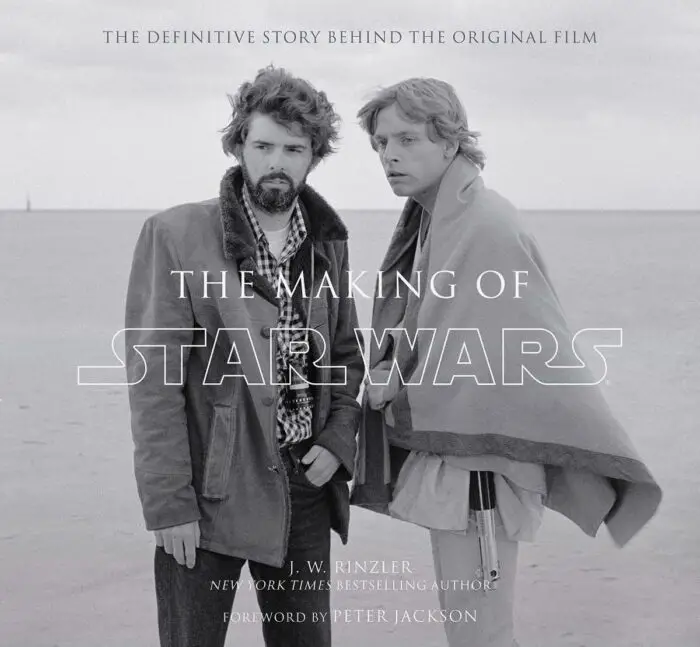
Culled from interviews and photos located within the vast archives of Lucasfilm, The Making of Star Wars is the most thorough and accurate account of how Star Wars became a reality from early concept to screen. After George Lucas released THX-1138, he turned his attention to a script he had written titled Adventures of the Starkiller. Containing enough action for three movies, the script was broken into chapters (or episodes) and then became Star Wars.
That was the first challenge. After that, production turned into one of the most frustrating shoots ever: harsh locations, surly crew members, mechanical failures, actors who had no idea what the script was even supposed to be about and a newly-formed special effects company who was inexperienced, unmotivated and very, very slow when it came to creating the very effects the movie needed to survive.
Author J.W. Rinzler (who had access to enough material to build a Death Star) dug and dug through the archives and from the material he found, managed to assemble the Citizen Kane of Star Wars books. Exploring Lucas’s original concept in the early ’70s straight to opening day on May 25th, 1977 and how the movie changed the industry that year, this is the one book every Star Wars fan absolute needs in their collection. If for no other reason, once you’ve finished pouring through it (and there is a lot to pour through), you’ll see Star Wars in a new light and I can’t think of a greater gift Rinzler could offer true fans.
The Devil’s Candy – The Bonfire of the Vanities Goes To Hollywood by Julie Salamon

1990’s The Bonfire of the Vanities was a costly, critically-ravaged, financial calamity which audiences stayed clear away from that Christmas season and it would wind up costing Warner Bros nearly $50 millions in losses. It’s the Brian De Palma movie he never talks about, it’s the movie Tom Hanks never talks about, it’s the movie Bruce Willis never talks about and to this day, it’s the movie Warner Bros. wishes they could forget about (they still haven’t released it on Blu-Ray.)
So how could a movie with a then A-list director, A-list stars and a very competent technical team behind it make such disaster? There were problems from the start: De Palma was close to signing Uma Thurman as co-star until Tom Hanks felt she was too young. Melanie Griffith was cast instead but when she showed up after a weekend with a noticeable boob job, scenes had to be re-shot. Alan Arkin was replaced by Morgan Freeman in a costly ($4 million) and controversial bit of last-minute re-casting. Bruce Willis’ arrogance was causing many problems. The weather often refused to co-operate with cinematographer Vilmos Zsigmond’s set-ups. Scenes were filmed at enormous costs and later scrapped due to negative audience test scores and the movie’s screenwriter, Michael Cristofer just couldn’t find the right narrative tone from the source material (Tom Wolfe’s novel of the same name). Reporter Julie Salamon was there to oversee everything from early script meetings, pre-production, casting, location scouting, filming, putting it together, dispiriting test screenings, rampant negative industry buzz all the way up to its release where it succumbed to critical savagery and died a quick box-office death. The movie itself may have been a forgettable dud, but The Devil’s Candy is one of the dishiest, fly-on-the-wall accounts of a movie production ever put to print.
The Stanley Kubrick Archives edited by Alison Castle

The coffee table book of all coffee table books, this is one you’ll be proud to display permanently. Complied by Alison Castle, The Stanley Kubrick Archives from Taschen is the ultimate book behind the inception, production and history of all Stanley Kubrick’s films including Spartacus, Dr. Strangelove, Lolita, 2001: A Space Odyssey, A Clockwork Orange, Barry Lyndon, The Shining, Full Metal Jacket and Eyes Wide Shut. Full never-before-seen HQ photos illustrate this book on practically every single page, including many behind-the-scenes photos of Kubrick at his most focused—and even playful. The book also looks at the director’s never-realized projects such as Napoleon, Aryan Papers and A.I. Artificial Intelligence and why they never came to fruition (A.I. was made by Steven Spielberg in fittingly, 2001). There’s more: photos of Kubrick’s work as a young photojournalist for Look! magazine and interviews with the director himself, plus several photos of Kubrick’s private home life. While there are many, many books in the marketplace of studious theories and deep analytical examinations and meanings found within Kubrick’s films, The Stanley Kubrick Archives simply focuses on the two aspects of Kubrick which matter the most: the movies and the man.
Top of The Rock – Inside the Rise and Fall of Must See TV by Warren Littlefield
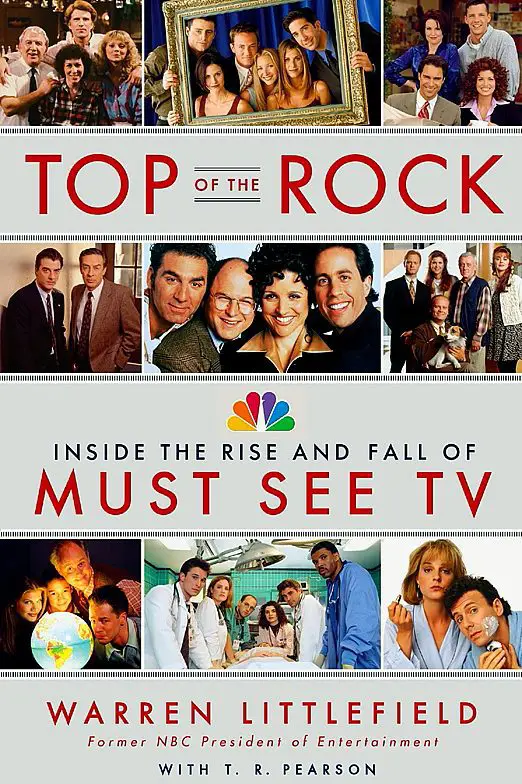
Before Netflix there was “Must-See TV” and one network (NBC) dominated above all others thanks to mega-hits Seinfeld, Friends, ER, Cheers, Will and Grace and more. In short, NBC owned TV in the ’90s. Warren Littlefield was the President of NBC Entertainment for much of this period. As his story begins in mid-1992, things didn’t look good for the future of the network, as Cheers and The Cosby Show would soon be ending and The Simpsons was now stealing Thursday night viewers over on FOX. Fortunately, the Cheers spin-off Frasier turned into a hit and Mad About You also was doing well. However, the network did have one other show which was growing an audience steadily year after year: Seinfeld. Then, with the arrival of Friends and ER in 1994, NBC was stronger than they’ve ever been and other networks were no match for “must-see TV.” Littlefield’s book is an oral history featuring key show creators, cast, writers and directors of that decade’s biggest shows including Law and Order, Will and Grace and even mild hits including Third Rock From the Sun and Just Shoot Me. In the age of Netflix and edgy, epic HBO programming, Inside the Rise and Fall of Must See TV is a look back at a time, not that long ago really, when network was king, and how we’ll probably never see another era like it again.
Killer Instinct – How Two Young Producers Took On Hollywood and Made the Most Controversial Film Of The Decade by Jane Hamsher

In early 1991, Jane Hansher and her partner Don Murphy were a small production company, not long out of college looking for a script they believed in and felt they could make relatively independently which would hopefully, make a name for themselves. The answer was buried under a stack of scripts on their living room/office floor: a screenplay titled Natural Born Killers by a gifted but unheard of writer named Quentin Tarantino, who at that point had not made a movie. Initially planned as a simple independent feature to be made for just $2 million, all that changed once Oscar-winner Oliver Stone read the script and wanted to make it. Then it became a $40 million Warner Bros summer release. Tarantino was pushed aside, Stone re-worked the script to his sensibilities, the two chosen leads, Woody Harrelson and Juliette Lewis who played the popular mass murderers and devoted lovers were not exactly the best of buds, the production was rumored to be cursed by evil spirits (Stone’s wife filed for divorce on the first day of filming, director of Photography Robert Richardson nearly lost his daughter) and a six-week shoot inside an actual prison full of real-life violent rapists and killers tested everybody’s sanity to its limits. In the end, it was a miracle the movie was made at all. But it was—and then the real controversy began.
High Concept – Don Simpson and the Hollywood Culture of Excess by Charles Fleming
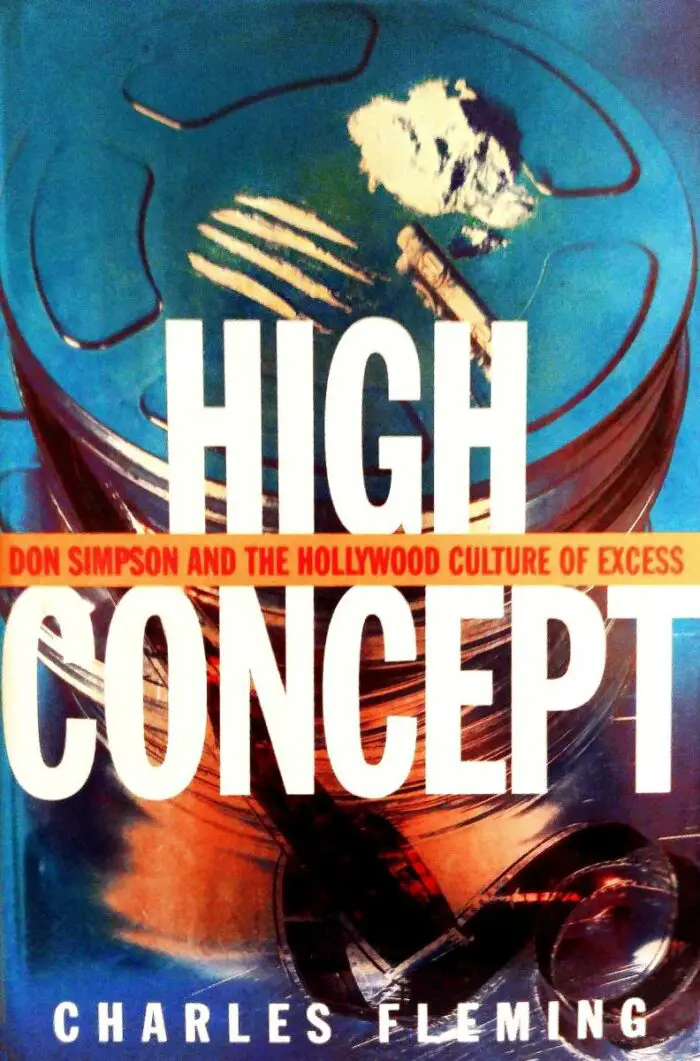
Don Simpson was one of the most successful producers of the 1980s who struck gold with Flashdance, Beverly Hills Cop I and II and of course, the mega-hit Top Gun. During the ’90s that success continued with Bad Boys, Crimson Tide, The Rock and Dangerous Minds. Simpson believed in big, loud, testosterone-fueled movie machines with toned mega-superstars as the leads (Simpson counted Sylvester Stallone, Tom Cruise, Eddie Murphy, Arnold Schwarzenegger and Charlie Sheen among his close friends. Women, not so much).
Simpson’s movies were certainly not “arty” but neither was the man himself who considered MTV rock videos and Penthouse magazine the epitome of culture. But his movies made money—an enormous amount of it. Simpson had the golden touch when it came to feeding audiences what they wanted movie-wise while feeding his own appetite for cocaine, sex, alcohol and drugs. After 20 years of self-abuse, Simpson died in January of 1996. It was a wake up call to the industry that the decade(s) of excess were finally over (Spielberg had even stopped drinking Cola by this point) but for a while, excess was the name of the game and nobody excelled at it better than Don Simpson. And while the industry itself might have cleaned itself up health-wise in the decades since, money still rules it (imagine if Simpson had lived long enough to see comic-book movies dominate). Simpson’s legacy is still alive and well in that regards, and always will be.
Movie Freak – My Life Watching Movies by Owen Gleiberman
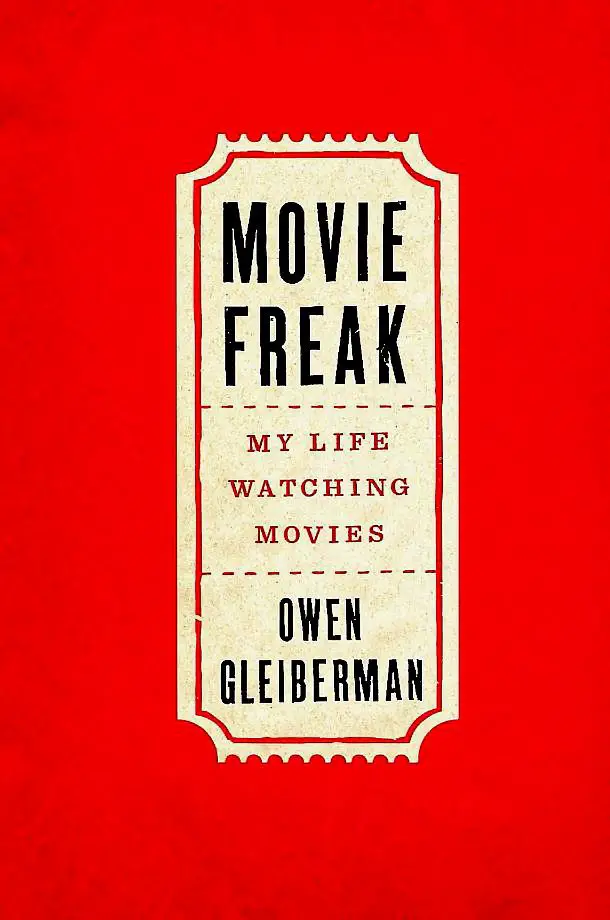
Chances are if you’re reading this site, you love watching movies, but Variety film critic Owen Gleiberman really loves watching movies. Gleiberman, who previously wrote for Entertainment Weekly during the ’90s, recounts his life as a young cine-maniac to being a disciple of Paulie Kael’s (who took him under her wing). Gleiberman recalls his years as a critic for the Boston Phoenix to his years at EW where right off the bat, he pissed his editors off by panning Pretty Woman in early 1990 and throughout that decade, would continue to butt heads with that magazine’s editors by championing small, weird, renegade movies which spoke to him (Dazed and Confused, Ed Wood, Crumb, Nixon, Breaking the Waves) versus the big-budget, soulless, star-driven, studio product that was the industry’s (and EW’s) bread and butter. Gleiberman writes thousands of words throughout his book about the five movies that defined his taste, and obsessions: Nashville, Manhunter, Sid and Nancy, Blue Velvet and Natural Born Killers. The small section on his late-night club hopping excursions with Oliver Stone is worth buying the book for alone. If that isn’t enough, Gleiberman writes about his love of porn, high-end stereo equipment to play his favorite music LOUD, his kinky relationships, and ultimately, how a movie-obsessed outcast became a husband and father and then discovered a love even more powerful than his life-long love for movies. If David Fincher ever gets stuck for a project, a movie version of Owen Gleiberman’s life would be more than a perfect fit.
Torn Music – Rejected Film Scores a Selected History by Gergely Hubai

Torn Music (the title is taken from Hitchcock’s Torn Curtain who tossed out long-time collaborator Bernard Herrman’s score for that film, ending the duo’s legendary partnership forever) is an in-depth and thoroughly researched telephone sized book chronicling the history of rejected (or replaced) movie film scores. Beginning from 1932’s The Most Dangerous Game (original score by W. Frank Harling and replaced by future Gone With the Wind composer Max Steiner) up to 2008’s Charlie Wilson’s War (Ry Cooder was replaced by James Newton Howard) and The Mummy: Tomb of the Dragon Emperor (Randy Endelman was replaced by John Debney.)
One surprising aspect of this book is in learning all the A-list composers who have had scores rejected during their careers such as Jerry Goldsmith, Elmer Bernstein, Thomas Newman, Patrick Doyle, Bruce Broughton and even Ennio Morricone. It seems the only composer not to have a score ever rejected is John Williams (who has himself been the replacer for Home Alone, Rosewood, Stepmom and The Patriot.)
This book is full of wonderful inside-info and first-hand accounts and observances such as when Jerry Goldsmith was hired by Robert Evans to replace Phillip Lambro on Chinatown and Goldsmith had only ten days to write the score—which he did. Or how Francis Coppola rejected his own father Carmine Coppola’s score to The Black Stallion and went with Shirley Walker’s. Or how in 1988, Maurice Jarre was booted off of Cocktail, James Horner off Young Guns, Jerry Goldsmith off of Alien Nation and Bruce Broughton off of The Accidental Tourist (Broughton was replaced by, you guessed it, John Williams.)
Some movies, such as 1992’s White Fang, went through three different composers; Basil Poledouris who was replaced by Hans Zimmer who was then replaced by Shirley Walker and 1995’s The Scarlet Letter who went through Ennio Morricone to Elmer Bernstein to John Barry. After reading Torn Music you’ll want to search out every rejected (and non-rejected) score listed in here.
Easy Riders, Raging Bulls – How the Sex-Drugs-and-Rock ‘N’ Roll Generation Saved Hollywood by Peter Biskind
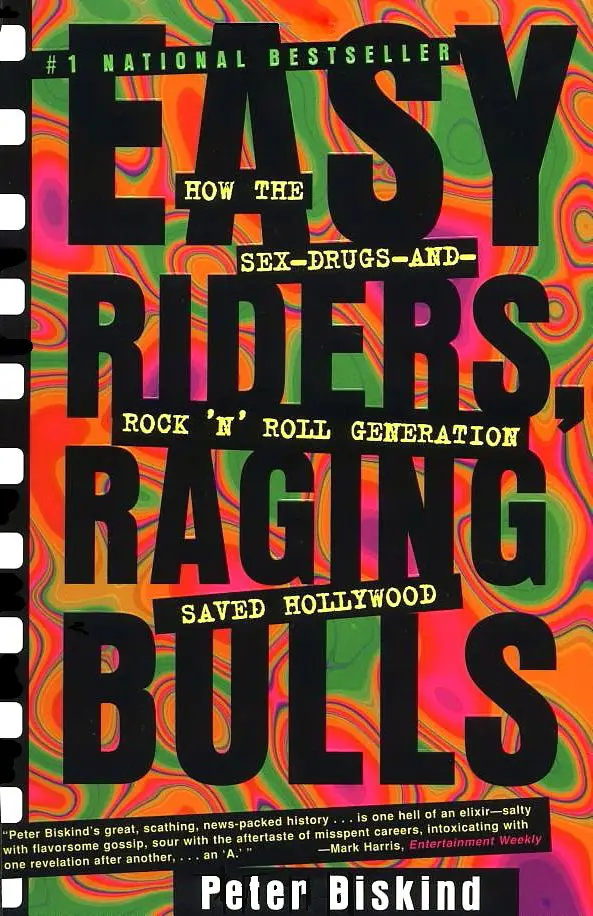
The book that Hollywood itself couldn’t put down upon its release during the summer of 1998. Not since Mario Puzo’s The Godfather and Peter Benchley’s Jaws has a book been read by so many insiders. Both books, incidentally, turned into movies that cover the period discussed within—the 1970s. Reporter Peter Biskind of Vanity Fair and Premiere spoke to many individuals who are explored here and were members of the “movie-brat” generation—the young, bold, rule-breaking, wild cinema school graduates such as Steven Spielberg, Francis Ford Coppola, George Lucas, Martin Scorsese, John Millius, Billy Friedkin, Matthew Robbins, Robert Zemickis, Paul Schrader, Hal Ashby, Robert Altman and Brian De Palma plus others who ultimately, came along when the industry was eating itself.
The studios were in turmoil as big-budget musicals were crushing the bottom line and audiences wanted something else. That something else was personal, small, dirty, rock-and-roll filled, drug-hazed movies that gave the finger to the establishment: movies such as Easy Rider, Five Easy Pieces, Mean Streets were not only innovative—they were profitable. These filmmakers, high on foreign movies (and other things, save for Spielberg and Lucas whose vices were Coca-Cola, McDonald’s and Oreo’s) applied that attitude of fearlessness to their work, and when these filmmakers actually began turning out box-office hits (The Godfather, The Exorcist, Jaws and Star Wars), this new breed of movie makers would inadvertently save the industry—the very one that was not that eager to welcome them in the first place.
Best Movie Year Ever – How 1999 Blew Up The Big Screen by Brian Raftery
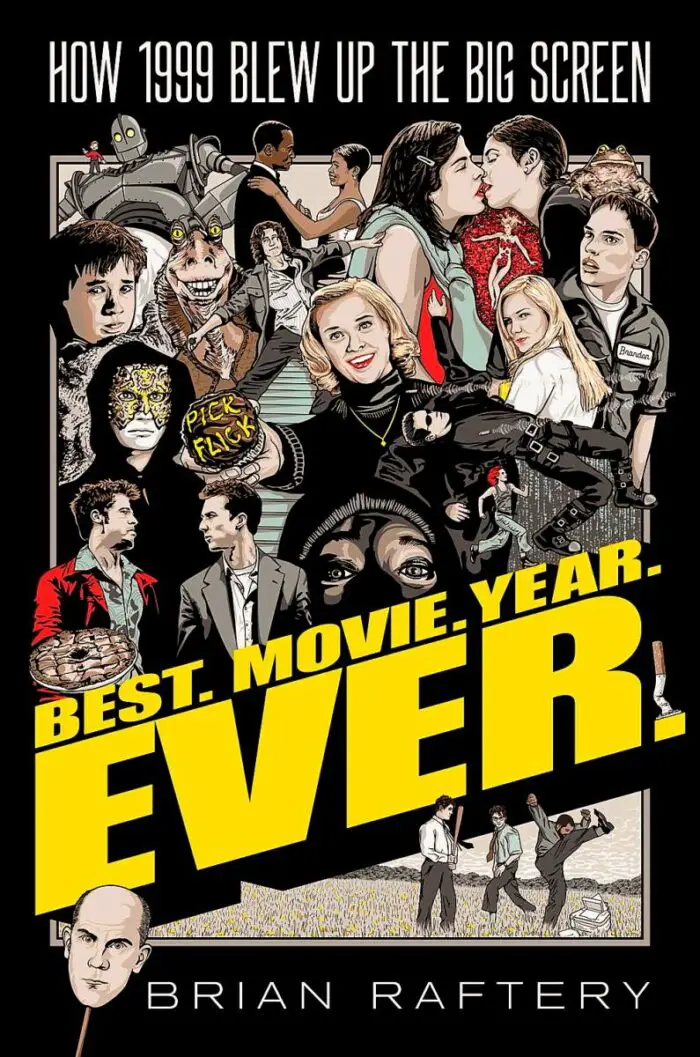
This month marks the 20th anniversary of the release of American Beauty and this fall will see the 20th anniversaries of Fight Club, Magnolia, The Insider, Boys Don’t Cry, Being John Malkovich, Toy Story 2 and Man On the Moon. The previous nine months of this year saw the anniversaries of The Matrix, Go, Run Lola Run, Cruel Intentions, Election, Office Space, Star Wars Episode I: The Phantom Menace, Notting Hill, South Park: Bigger, Longer and Uncut, Bowfinger, The Sixth Sense, The Blair Witch Project and Eyes Wide Shut. If your heart just sped up reading those titles that means you were around in 1999 to experience the wild, incredible, brain-bending, heart-piercing, nerve-frying exhilaration of what being a movie-goer that year truly meant. In short: it was the best movie year ever!
In his recently-released book, Brian Raftery looks back on the most memorable and important movies that defined the final year of the ’90s and why many of them (Fight Club, American Beauty, Office Space, Boys Don’t Cry and The Matrix specifically) examined a common theme: characters asking themselves who they really were in the world and what defined them. The movies during this time had to ask these questions because with the new millennium approaching fast, who knew how much time they/we had? Even the animated movies of that year (South Park, The Iron Giant) were asking grown-up questions about where we might be headed. But it isn’t always serious going. This book also looks at several crowd-pleasers such as American Pie, 10 Things I hate About You and The Mummy and why audiences responded to them. But the answer is simple: the movies of 1999 were also a helluva lot of fun.

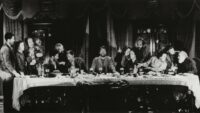


Good post